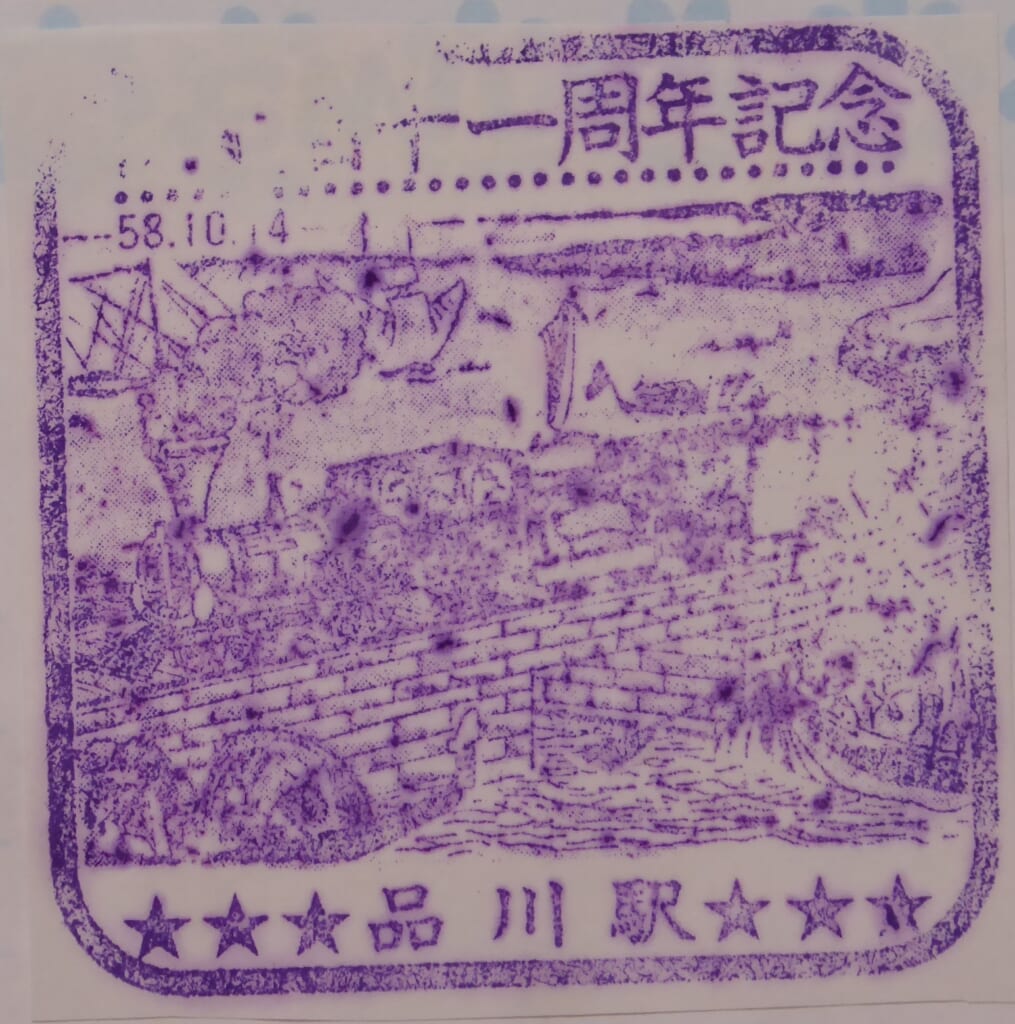Explanation of the Fifty-three Stations of the Tokaido 2 Shinagawa
9.8km from Kawasaki to Shinagawa, 35°37′19″N 139°44′21″E
Shinagawa is the first of the Fifty-three Stations of the Tokaido.
It is in what is now Shinagawa Ward, Tokyo.
It was one of the four Edo Stations, along with Itabashi on the Nakasendo, Naito-Shinjuku on the Koshu Kaido, and Senju on the Nikko Kaido (Oshu Kaido).
The station had one honjin, two wakihonjin, 111 hatago, 64 teahouses, and a population of about 7,000, with a total length of 2km.
Shinagawa was established in 1601 near Shinagawa Port, which had flourished as a port town since the Middle Ages.
It is an area along the old Tokaido from Kita-Shinagawa Station on the Keikyu Main Line in the north to the area around Aomono Yokocho Station in the south.
Shinagawa-shuku was the first post station on the Tokaido, which was considered one of the most important of the five main roads.
It was a bustling city as Edo’s gateway to both land and sea routes leading to the western provinces.
Compared to the other four Edo post stations, it had a greater number of inns and a greater number of daimyo passing through on their alternate attendance journeys.
It was divided along the Meguro River, with Kitashinagawa-shuku to the north, Minamishinagawa-shuku to the south, and the post station north of Kitashinagawa called “kachi Shinjuku.”
kachi Shinjuku existed between Shinagawa-shuku and Takanawa, but Chayamachi was recognized as a post station in 1722.
Instead of the usual post station costs of horse-drawn carriages and pedestrians, this post station only covered pedestrians.
kachi Shinjuku was named “a new post station that only covered pedestrians.”
The red-light district of Shinagawa-shuku also flourished as a brothel (red light district, red light district, food-serving inn).
In 1772, the shogunate set the number of food-serving women in Shinagawa at 500.
However, the numbers continued to grow without any real effect.
According to records from around 1843, there were 92 food inns and 64 teahouses selling tea.
It flourished as a major entertainment district, with the saying “Yoshiwara in the north, Shinagawa in the south.”
When the road magistrate cracked down on it in January 1844, 1,348 women who served women were arrested.
In 1869, Shinagawa Prefecture was established within the jurisdiction of the Musashi Prefectural Governor.
In 1871, construction began on the Shinagawa Station building north of Kitashinagawa.
In 1872, the post station system was abolished and the railway was opened, so the town lost its function as a post town.
Many brothels continued to operate in Kitashinagawa.
Related commercial facilities were built in the area, and large factories were built in the Meguro River basin, due to low land prices and convenient water transportation and irrigation.
In Minami-Shinagawa, the number of small subcontracted factories and their related housing increased, and shops also sprung up along the old Tokaido road.
The area continued to thrive as a brothel until the Anti-Prostitution Law came into force in 1958.
The area was hardly damaged during World War II.
The brothels in Kita-Shinagawa continued to operate after the war.
The Anti-Prostitution Law changed the buildings into dormitories for factory workers and private apartments, and a shopping street was formed.
Meanwhile, in Minami-Shinagawa, large factories around Meguro River continued to move out due to the remodelling of the Japanese archipelago in the 1970s.
The shopping street that catered to the workers declined.
While the nearby reclaimed land was redeveloped, the area was left behind.
On the other hand, the historical resources unique to the post town were preserved.
In 1988, the “Old Tokaido Shinagawa Post Town Planning Council” was organized to revitalize the town by making use of the historical landscape.
Shinagawa Station is one of the busiest stations in the world.
It has been officially decided that it will be the starting point of the JR Central Linear Chuo Shinkansen, which will open after 2027.
① “Hoeido version”
It depicts the rear of a feudal lord’s procession leaving Nihonbashi.
The scene is near dawn, and most of the shops along the road are closed.
Only the teahouse in the foreground is open, and inside you can see a woman who appears to be a customer.
Shinagawa flourished as a pleasure quarter second only to Yoshiwara.
The steep mountain on the right is Yatsuyama.
The sea on the left is Shinagawa Bay.
Shinagawa Bay no longer exists.
Several fully-loaded boats and the masts of moored boats can also be seen.
② “Gyousyo version”
Early in the morning, two travelers who left Nihonbashi are taking a break at a teahouse.
There are fishermen on the sea collecting seaweed.
③”Reisho version”
Early in the morning, two travelers are taking a break at a teahouse after leaving Nihonbashi.
The teahouse is close to the port, and a large sailing ship is moored nearby.
④ “Hokusai version”
Shinagawa flourished as a pleasure quarter second only to Yoshiwara.
This is a glamorous tatami room scene in the red-light district.
⑤ “Travel image”
This is Shinagawa Station 22 years ago.
It’s completely different from the station today.
⑥ “Stamp image”
This is a stamp from JR Shinagawa Station.
Hoeido version

Gyousyo version
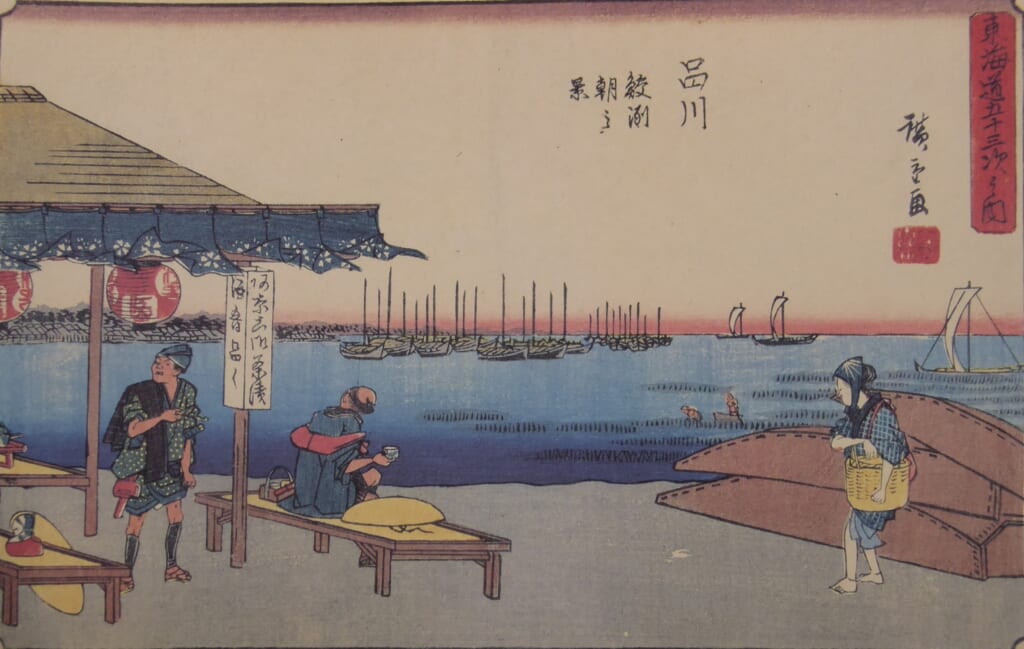
Reisho version
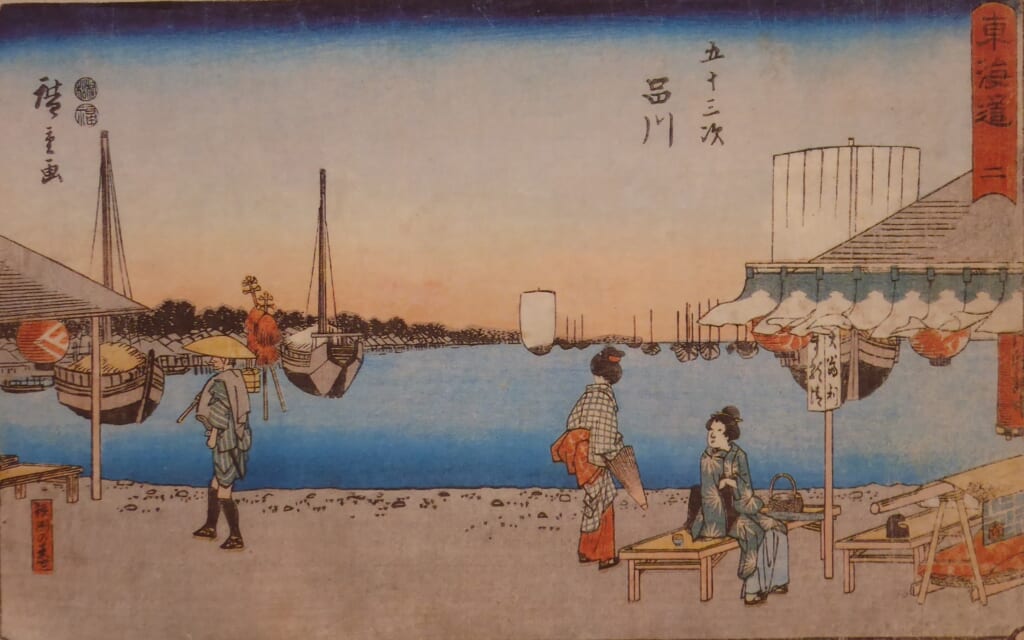
Hokusai version
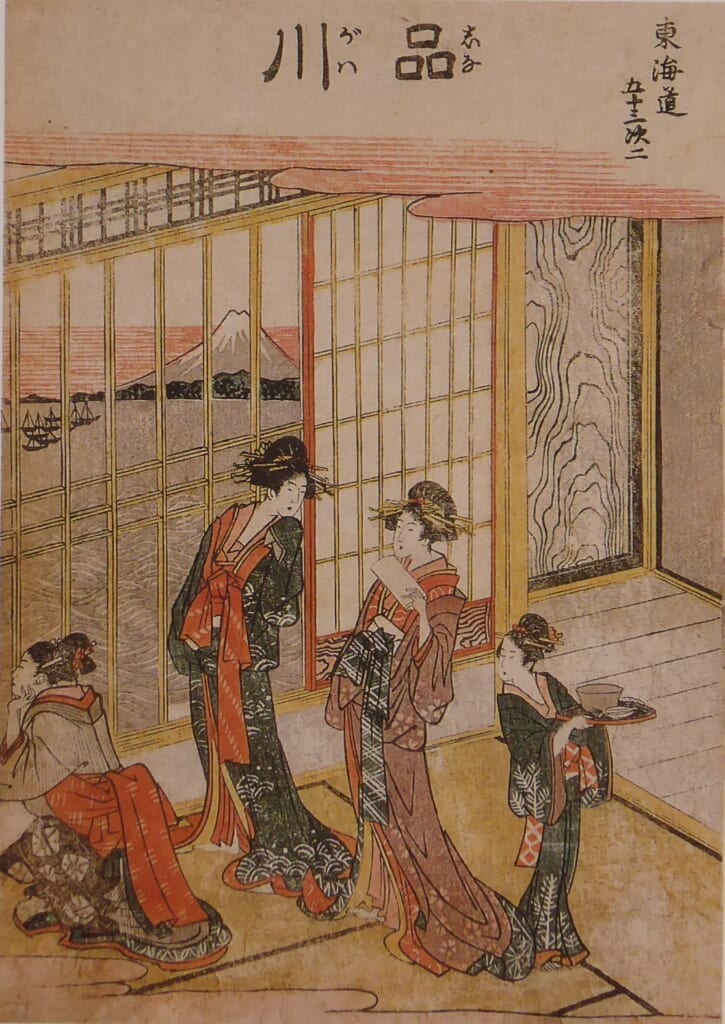
Travel image
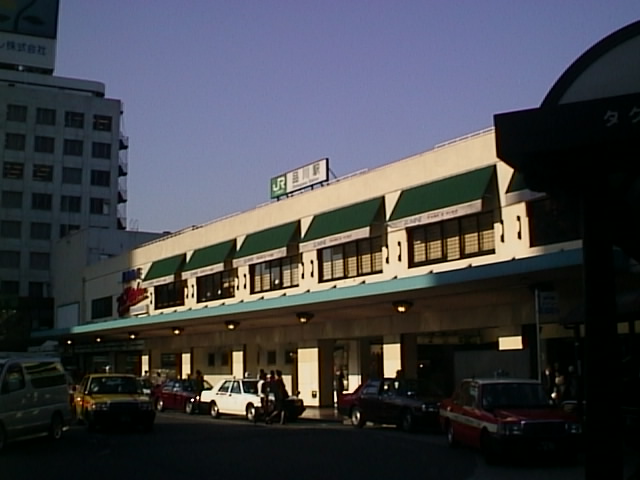
Stamp image
